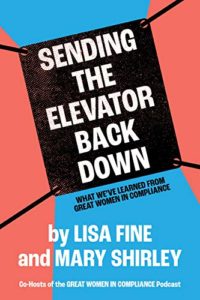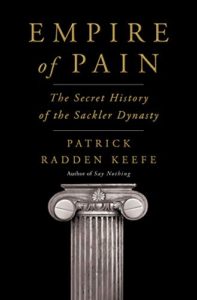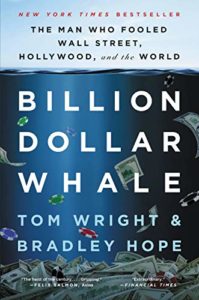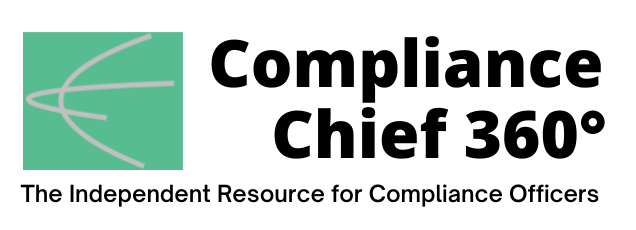
Sending the Elevator Back Down: What We’ve Learned from Great Women in Compliance (CCI Press, 2020)
 With the explosion of podcasts in the last few years, it may not surprise you that some of the authors on this list would hail from that corner of the media. Lisa Fine and Mary Shirley, two compliance leaders and the co-hosts of the Great Women in Compliance Podcast, share their insights from speaking to tons of other experts in the field, particularly women who are breaking glass ceilings and paving the way for others in the compliance world. In Sending the Elevator Back Down, the stories are relatable and the lessons are universal, for either the young upstart or the corporate compliance veteran, with the women they spoke to hailing from all corners of the ethics and compliance globe.
With the explosion of podcasts in the last few years, it may not surprise you that some of the authors on this list would hail from that corner of the media. Lisa Fine and Mary Shirley, two compliance leaders and the co-hosts of the Great Women in Compliance Podcast, share their insights from speaking to tons of other experts in the field, particularly women who are breaking glass ceilings and paving the way for others in the compliance world. In Sending the Elevator Back Down, the stories are relatable and the lessons are universal, for either the young upstart or the corporate compliance veteran, with the women they spoke to hailing from all corners of the ethics and compliance globe.
In the introduction, the authors state that they wanted to create something “different from a typical book on compliance focused on regulations, case analysis, and the substantive and serious ‘hard skills’ that benefit this profession. Instead, we envisaged woman all over the world coming together to share triumphs and truths about facing cross-cultural challenges and adversity.” And that is exactly what Sending the Elevator Back Down is.
“Implicit in the idea of sending the elevator back down is that of raising someone else up,” Shirley writes in a recent article related to the book. “Yet there are people in the workplace and community who seek to bring others down. … Sending the elevator back down rails against such toxic thinking and encourages space for everyone.”
Cybersecurity for Executives in the Age of the Cloud (Independently Published, 2020)
Just about every list of top risks at companies, regardless of whom is being surveyed, includes cybersecurity at or near the top. Cybersecurity has gone from one of those concerns that the IT folks down in the server room need to care about to one that touches and worries just about everyone in the organization. And with regulators pushing harder for companies to increase cyber-defenses and disclosure more about cybersecurity, compliance officers are spending much more time on the complex topic.
With technological revolution after technological revolution hitting the web, data breaches will be forever on the rise, and compliance professionals and executives need at minimum a basic arsenal of cybersecurity skills in their toolkits. Top executives may not be making the day-to-day technical decisions related to cybersecurity, but that doesn’t mean that they can’t hone these skills to help foster a top-down security mindset throughout the organization.
In Cybersecurity for Executives in the Age of the Cloud, author Teri Radichel gets to the root cause of many well-known cyber-attacks of today, which she says often stem from underlying, fundamental security problems, rather than crafty malware attacks. She also covers many of the technology areas that executives should be more versed on, including cybersecurity essentials such as encryption, networking, data breaches, cyber-attacks, malware, viruses, incident handling, governance, risk management, security automation, vendor assessments, and cloud security.
While the book imparts lots of cybersecurity knowledge, it’s also a surprisingly fun and interesting read with lots of examples and lessons for executives.
Empire of Pain: The Secret History of the Sackler Dynasty (Doubleday, 2021)
 The opioid crisis, and particularly the missteps and lack of responsibility by the corporate pharmaceutical companies that participated in it, has many lessons for compliance professionals. It’s a great example of how poor corporate cultures can lead to bad decision-making at the top with devastating consequences. It also reminds us that satisfying the letter of the law with regulators isn’t always enough to stay on the right side of history.
The opioid crisis, and particularly the missteps and lack of responsibility by the corporate pharmaceutical companies that participated in it, has many lessons for compliance professionals. It’s a great example of how poor corporate cultures can lead to bad decision-making at the top with devastating consequences. It also reminds us that satisfying the letter of the law with regulators isn’t always enough to stay on the right side of history.
Empire of Pain chronicles these and other mistakes made my members of the Sackler family and their tragic effects, from the many lives destroyed, to the crumbling of the Sackler fortune and philanthropic work. The Sackler name has never been more synonymous with unethical activity and longstanding corruption as the world finds out about the family’s work to downplay the safety risks of OxyContin, a major driver of today’s opioid epidemic.
In Empire of Pain, author Patrick Radden Keefe explores the decades-long history of ethics violations and legal loopholes the Sackler family has exploited in order to evade any sort of responsibility. The dynasty’s existence is rife with drama—pompous personal lives, disputes over property, the use of financial power to attempt to make any and all problems go away. A heavier read on the build-up to the opioid crisis, Empire of Pain serves as a reminder of the stakes of ethics and compliance work, where catching violations could mean the difference between life and death.
The Glass Hotel (Knopf, 2020)
We didn’t want to include just nonfiction in our list and there are, of course, some novels with good compliance related topics and lessons. A welcome addition to this small, but growing list is The Glass Hotel, by Emily St. John Mandel. The Glass Hotel follows an exhilarating narrative set at the strange intersection of two shocking events—a massive Ponzi scheme collapse in a Manhattan high rise and the mysterious loss of a woman from a ship at sea. Antagonist Jonathan Alkatis (think Bernie Madoff) runs a massive financial empire, moving imaginary sums of money through clients’ accounts. When it all goes downhill, the collapse ruins lives and obliterates the fortunes of many. Years later, a victim of the fraud takes the lead on the investigation into the disappearance of a woman at sea.
Exploring the intersection of the themes of hubris and greed with mystery and loss, the award-winning Emily St. John Mandel takes the audience through a unique tale of love and loss, guilt and redemption, beauty and pain. Readers won’t be able to avert their eyes from the pages of the instant classic, even if the compliance professionals among us won’t be able to stop rolling their eyes at some of Alkatis’s moves.
Billion Dollar Whale: The Man Who Fooled Wall Street, Hollywood, and the World (2018)
 Now, back to nonfiction: Known now as one of the world’s greatest fraudsters-turned-international fugitives, Jho Low was once a mild-mannered graduate from the Wharton School of Business at the University of Pennsylvania. Called a Best Book of 2018 by the Financial Times and Fortune, this nonfiction thriller follows Low’s whole character arc, from his time as a young social climber in Malaysia to his rise as one of the U.S. Justice Department’s greatest cases. Billion Dollar Whale is a few years old now—are we already in September, 2021—but the narrative is as gripping as it was the first time we heard of it. And if you’re not familiar with the case, business lessons and compliance failures abound.
Now, back to nonfiction: Known now as one of the world’s greatest fraudsters-turned-international fugitives, Jho Low was once a mild-mannered graduate from the Wharton School of Business at the University of Pennsylvania. Called a Best Book of 2018 by the Financial Times and Fortune, this nonfiction thriller follows Low’s whole character arc, from his time as a young social climber in Malaysia to his rise as one of the U.S. Justice Department’s greatest cases. Billion Dollar Whale is a few years old now—are we already in September, 2021—but the narrative is as gripping as it was the first time we heard of it. And if you’re not familiar with the case, business lessons and compliance failures abound.
In the decade following his graduation, Low funneled billions of dollars from an investment fund under the nose of global financial industry watchdogs, using the money to influence elections, purchase luxury real estate, and fund his lavish lifestyle. Following Low’s heist from beginning to end, Tom Wright’s work is a harrowing yet needed lesson of the hubris and greed in the financial world.
Bonus pick: How to Pay a Bribe: Thinking Like a Criminal to Thwart Bribery Schemes (Independently Published, 2016)
OK, this one is actually an older book than the others on this list, but it’s so good we thought we’d include it anyway. Fish this one out of the bookshelf you positioned behind you during Zoom meetings and give it another read. And if you haven’t read it, this is a great example of literature that can bring your work life into sharp relief and may remind you of the importance of the work that compliance professionals do.
In How to Pay a Bribe, author Alexandra Wrage explains the backdoor dealings of bribery and corruption throughout the corporate world. Her work encapsulates words from investigative reporters, former prosecutors, and compliance experts from around the globe. Wrage takes the audience into the mind of people going to extreme lengths to get exactly what they want—to best defeat bribery, you have to understand the inner workings of the corrupt, scheming world of under-the-table bribery and theft and this book takes us there.
—
That concludes our list. So, put down the rake, grab a pumpkin latte, pull on your favorite comfy sweater, and get down to turning some pages that will not only thrill and entertain you, but will bring you many compliance lessons, examples, and situations that you can learn from and may just be able to apply in your own work. Happy reading! ![]()
Danny Flynn is assistant editor at Compliance Chief 360°

